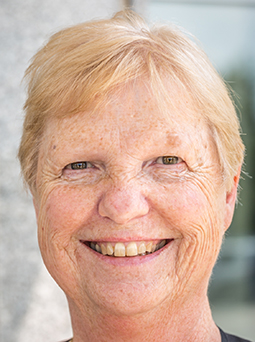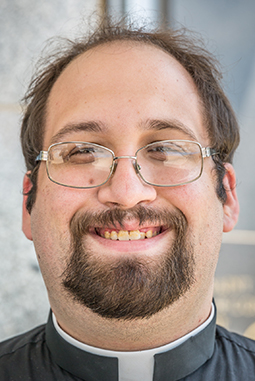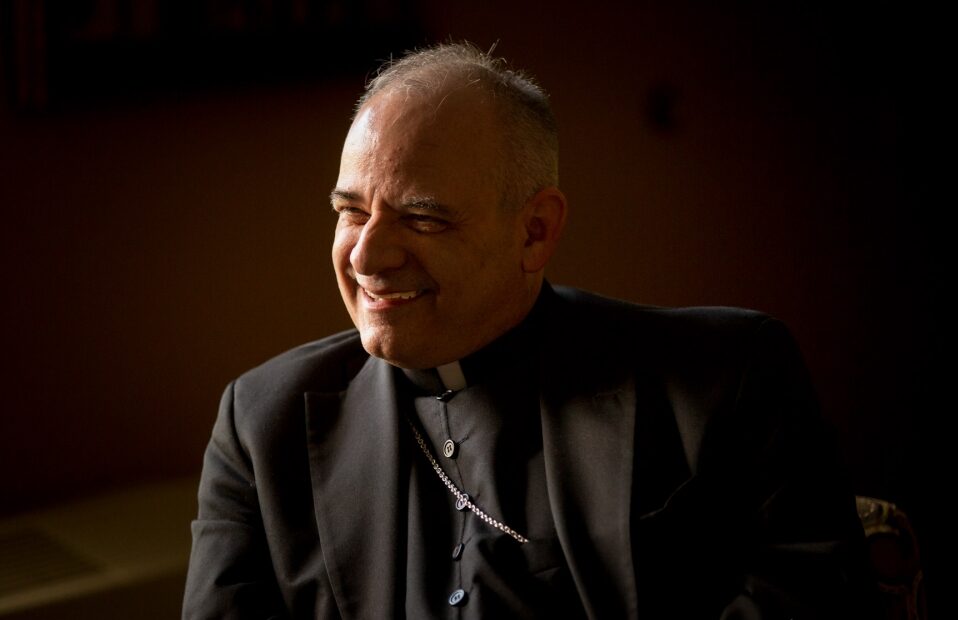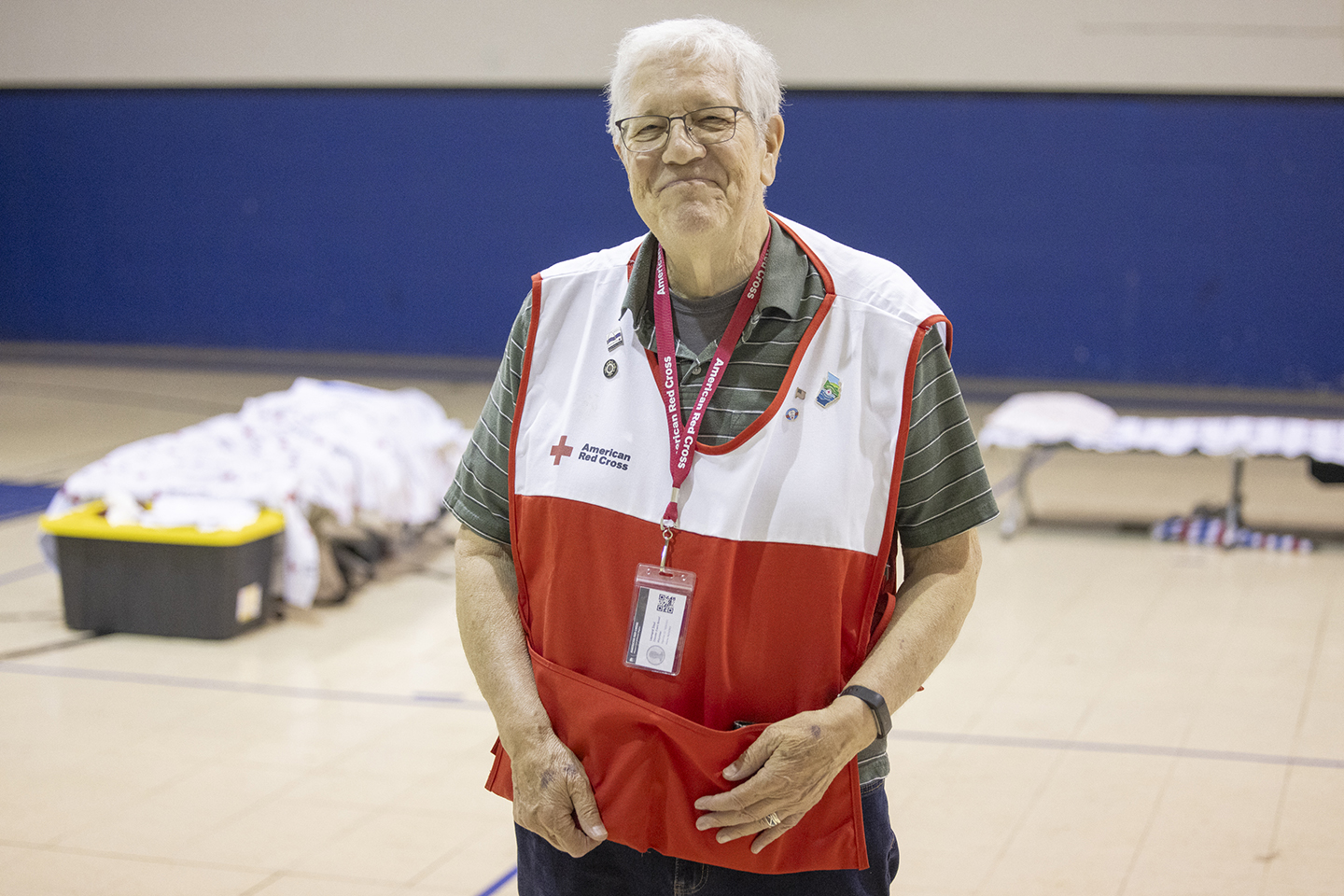Seminarians on chaplaincy internship say experience has helped shape their pastoral formation as they look toward priesthood

Kenrick-Glennon seminarians on chaplaincy internship at Mercy Hospital describe moments of being present to patients, families and staff

Ryan Quarnstrom imagined that his first baptism as a priest would take place in a church. The baby, wearing a beautiful white baptismal gown, would be surrounded by parents, godparents and loved ones.
Instead, Quarnstrom’s first infant baptism took place as a seminarian, in a hospital operating room under difficult circumstances, and surrounded by more than a dozen health care workers. Rather than wearing vestments, he wore a hospital gown and personal protective equipment.
But administering the sacrament to a child who did not live long on this earth was possibly one of the most moving experiences of his formation thus far as a seminarian.
“Being there and intimately uniting myself to the soul of this person, who I brought into the Church and who God has cleansed from original sin through my hands and made a child of God — it was powerful,” Quarnstrom said.
Along with Kenrick-Glennon seminarians Rob Lawson and Jake Braun, Quarnstrom recently completed a seven-week internship volunteering in the Pastoral Services Department at Mercy Hospital St. Louis. The three — Lawson, a second-year theology student, and Braun and Quarnstrom third-year theologians — reflected on the experience and how they believe it will shape their future priesthood.
“We’ve had experiences here at the hospital and in seminary that we will almost inevitably encounter again in a parish as priests,” Quarnstrom said. “To have experienced this with patients and to begin to understand some of the complexities of the medical side of things, but also the emotional and spiritual needs of patients and their families, is invaluable for us in our pastoral formation. We’re entering into the most intense and difficult moments of their lives, and we’re bringing Christ into those moments.”

The majority of Quarnstrom’s time was spent in labor and delivery, with some visits to the neonatal intensive care unit as well as trauma and surgery. Lawson worked with patients and staff in the ICU, transitional care unit, burn unit and
medical telemetry. Braun volunteered in the pediatric intensive care unit, with some visits to ICU and the emergency department. None of them worked with COVID-positive patients.
They witnessed a breadth of encounters — from being present in the ICU with a patient who died without family present, to performing baptisms in emergency situations, and even playing the guitar for young patients in the pediatrics unit.
All three said that connecting with patients and families, as well as hospital staff, was rewarding and humbling. Braun recalled how staff members stopped him to request prayers or to ask him if he would talk to a co-worker about a difficult situation. Lawson added how staff would sometimes ask him to visit with a patient dealing with anxiety about a situation or to encourage someone to get out of bed and move around.
Sister Janet Crane, a School Sister of Notre Dame and chaplain who has mentored seminarians in the Pastoral Services Department for the past several years, said the internship provides a safe place to broaden their pastoral experiences, and in situations that are not always part of typical parish life. The seminarians shadowed other chaplains and took notes on each patient they saw. The group also had a debriefing with Sister Janet at the end of each day and wrote a weekly theological reflection of their experiences.

“The day they show up and the day that they leave are two different experiences,” Sister Janet said. “They come with an education, but if the theology doesn’t hold up against suffering, it’s time to broaden that. It’s a privilege for me to see these young men grow before my very eyes. Sometimes I feel like I’m a witness even more than a mentor.”
The seminarians saw the opportunity to serve as a witness to the Catholic faith — especially to patients and family members who had fallen away from the Church. Braun recalled being present with someone who witnessed their parent receiving chest compressions. The family member was no longer an active Catholic, but appreciated Braun being there for the family in their time of need.
“Those moments, as awful as they can be, somehow make us more aware that there’s something after death,” Braun said.
Some patients would list Catholic for their religious preference, Lawson said, only for him to later discover that they haven’t been active for years. “It’s a major life event coming to a hospital, but somehow you come back to the Church and realize there was something there,” he said. “And sometimes there is baggage that comes with that. We have to be aware of that, and if they want to unpack it with us, we sit there and unpack it with them.”
It’s in those moments that they learned more about being an example of mercy to others. “Their history and their sins and whatever difficulties they experience in their relationship with God fall away for a moment,” Quarnstrom said. “We’re here now in this moment. What does God’s mercy look like here? And how can I as a chaplain be a sign and an image of that mercy to this person before they meet God?”

Braun said the experience helped him to see more deeply the supernatural element of the priesthood.
“Knowing that I can’t do this on my own, but only through God’s grace, will serve me well as a priest,” he said.
Sr. Janet Ryan Quarnstrom imagined that his first baptism as a priest would take place in a church. The baby, wearing a beautiful white baptismal gown, would be surrounded by … Seminarians on chaplaincy internship say experience has helped shape their pastoral formation as they look toward priesthood
Subscribe to Read All St. Louis Review Stories
All readers receive 5 stories to read free per month. After that, readers will need to be logged in.
If you are currently receive the St. Louis Review at your home or office, please send your name and address (and subscriber id if you know it) to subscriptions@stlouisreview.com to get your login information.
If you are not currently a subscriber to the St. Louis Review, please contact subscriptions@stlouisreview.com for information on how to subscribe.







